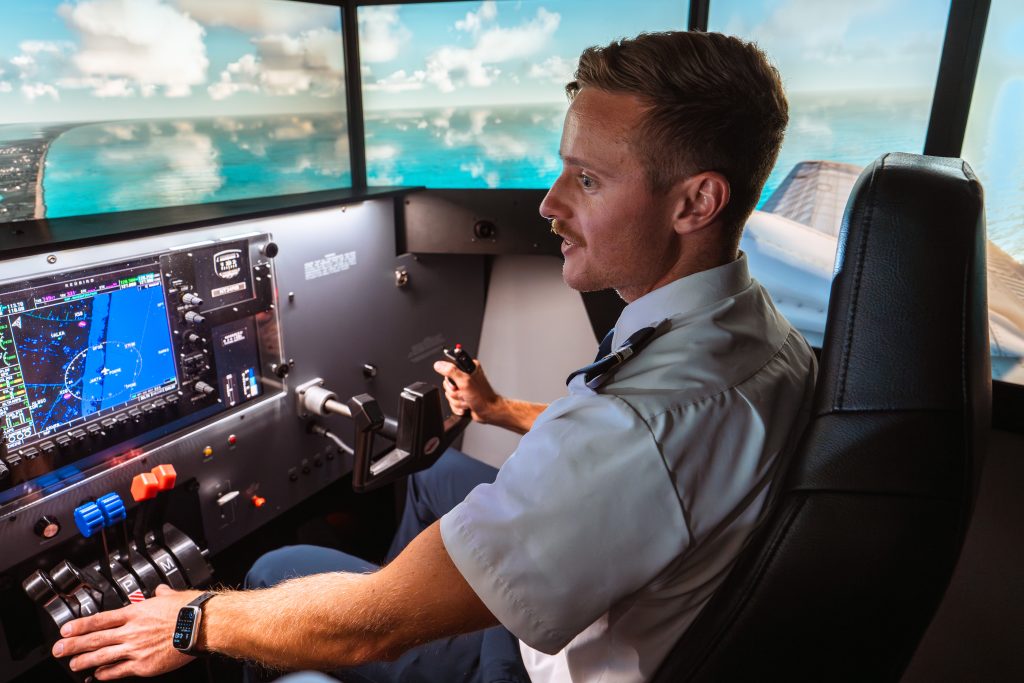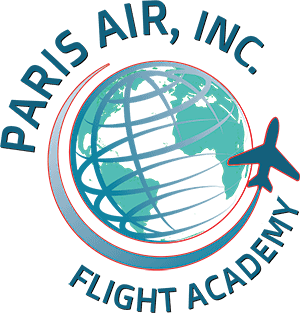Turning Rainy Skies Into Learning Opportunities
When most people think of Florida, they imagine year-round sunshine, palm trees swaying in a light breeze, and blue skies stretching as far as the eye can see. And while that picture is certainly true for much of the year, flight students training in Florida quickly learn that the weather here has its own rhythm. Flying in Florida’s stormy-season offers some unique opportunities for the student pilot.
August and September mark the peak of Florida’s rainy, storm-prone season. Sudden downpours, afternoon thunderstorms, and shifting wind patterns can cause unexpected changes to a training day. For aspiring pilots, this season brings a unique set of challenges—but also opportunities.
At Paris Air, we believe that weather doesn’t just shape the schedule; it shapes the pilot. Learning to fly in Florida’s storm season gives our students not only technical proficiency, but also the confidence to navigate the skies when conditions are less than perfect. Additionally, Paris Air offers a lot of flexibility in flight scheduling to accommodate for the afternoon rainstorms of the late Summer months.
Florida’s Storm Season and Its Impact on Flying
The summer and early fall months bring higher humidity and warmer ocean temperatures, creating the perfect recipe for fast-developing storms. While mornings often begin clear and calm, afternoons can bring towering clouds, heavy rain, and flashes of lightning that sweep across the Treasure Coast.
For pilots in training, these weather shifts impact how, when, and where flying lessons can take place. Some flights may need to be rescheduled, shortened, or adapted to avoid storms. Cross-country training routes may be altered to dodge weather systems. And of course, safety always comes first—if the conditions aren’t flyable, the plane stays on the ground.
At first glance, storm season might feel like a setback to student pilots who are eager to log hours. But in reality, these conditions provide some of the best real-world training opportunities a pilot could ask for.
Building Instrument Skills in Real Conditions

When skies are clear, student pilots can rely on what they see outside the cockpit to guide their decisions. Visual flight rules (VFR) training is about looking outside, scanning for traffic, and keeping reference to the horizon. But when the weather shifts—when clouds roll in, visibility drops, or turbulence bumps the wings—pilots need to lean on their instruments.
This is where storm season becomes a powerful teacher and tool.
Paris Air students working on their Instrument Rating (IR) gain real-world experience during these months. While simulators are excellent for practicing procedures, nothing compares to flying through actual low-visibility or rain conditions, under the careful supervision of an instructor. Students learn to:
- Trust their instruments when their instincts may be thrown off.
- Manage workload while navigating storms and unexpected diversions.
- Communicate effectively with air traffic control for clearances and reroutes.
- Maintain composure and decision-making under pressure.
By the time they complete their IR training, students who have experienced Florida’s storm season often feel significantly more confident about handling unpredictable weather anywhere in the world. They’re not just passing a checkride—they’re becoming adaptable, capable pilots.
How Paris Air Prepares Students for Stormy Weather
One of the biggest advantages of training at Paris Air is the support system in place for students. Storm season may bring added complexity, but our instructors, dispatchers, and operations team ensure that every flight is safe, efficient, and educational.
Here’s how we prepare our students for weather challenges:
1. Detailed Weather Briefings
Before every flight, students learn how to gather and interpret weather information. Storm season offers daily practice in reading METARs, TAFs, radar images, and storm advisories. Students begin to understand how fast conditions can change and how to anticipate potential issues.
2. Flexible Scheduling
Afternoon storms are common, which is why many flight lessons are scheduled earlier in the day. Our team works with students to maximize flying time, ensuring they don’t lose momentum in their training.
3. Storm Preparedness and Safety Protocols
From aircraft tie-downs to storm monitoring, Paris Air has strict procedures to keep both students and aircraft safe. Students gain insight into not just personal flying decisions, but also operational practices that airlines and professional flight departments use worldwide.
4. Instructor Support in Real Time
When conditions are safe for training, instructors use storms as teaching moments. Whether it’s flying around a developing cell, practicing instrument approaches in low visibility, or making a go/no-go decision, students learn in an environment where safety is prioritized but learning never stops.
Why Training in Florida Still Outshines Other Locations
It’s true—Florida has its stormy season. But here’s the key: even with these weather patterns, the Sunshine State still offers more flyable days per year than most other training destinations in the United States.
Consider students training in northern states or regions prone to snow and ice. While Florida deals with afternoon thunderstorms, other states may face weeks of grounded operations during winter, when icy runways, snowstorms, and frigid conditions bring training to a halt.
In Florida, the storms pass quickly. Mornings are often perfect for flying, and once a storm moves out, skies clear rapidly. This means students get the best of both worlds: ample clear-sky flying time and valuable experience handling storm-related conditions.
For international students, this is especially beneficial. Many of them return home to regions where weather can be challenging, whether that’s heavy monsoon rains, desert winds, or northern fog. Training in Florida ensures they’ve already experienced dynamic weather conditions in a safe, supportive environment.
Storm Season as a Confidence Builder
Perhaps the greatest benefit of training through Florida’s rainy season is the confidence it instills in students. Flying can be intimidating when conditions aren’t perfect, but confidence comes from preparation, exposure, and guidance.
By the time a Paris Air student graduates, they’ve not only practiced maneuvers in blue-sky conditions but also navigated storms, adapted flight plans, and honed their decision-making skills when the weather tested them.
That kind of experience doesn’t just build a pilot—it builds a professional aviator.
Storm season in Florida may change the rhythm of flight training, but at Paris Air, we view it as one of the most valuable times of year for our students. Every cloud, every sudden downpour, and every shift in visibility is an opportunity to strengthen skills that will serve pilots throughout their entire careers.
Whether you’re working toward your Private Pilot License, diving into Instrument training, or preparing for advanced ratings, Paris Air ensures that weather isn’t an obstacle—it’s a classroom.
With the right mindset and the right guidance, stormy skies become stepping stones to safer, stronger, and more confident flying.
Ready to take on the skies in every condition? Contact Paris Air today to learn more about our flight training programs and discover how training in Florida can set you up for success anywhere in the world.

